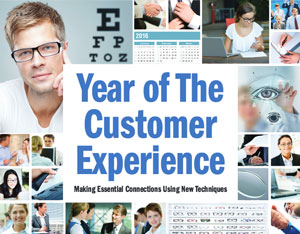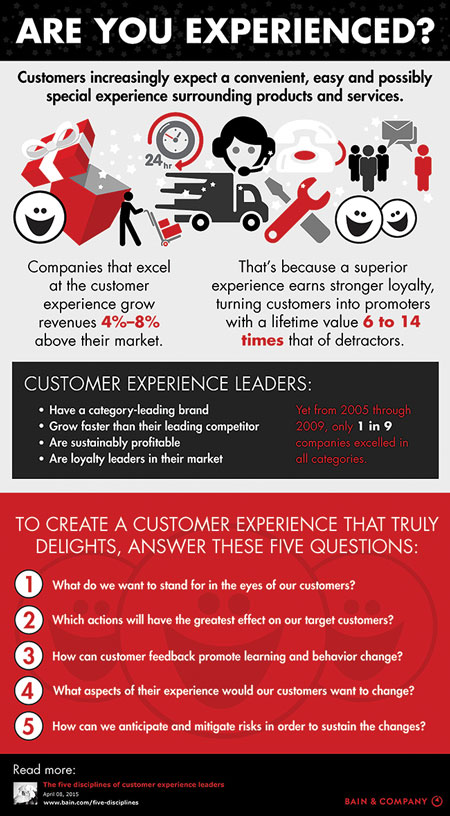NEW YORK—Keeping up with the changing consumer and the new competitive environment will be as challenging as ever in 2016. However, the broadening of definitions of what comprises a positive “customer experience” will pose more opportunities for optical retailers and ECPs to find ways to provide a satisfactory and compelling buying and patient interaction—across both brick and “click” channels, experts say.
 Click here to download a PDF of Year of
Click here to download a PDF of Year of
The Customer Experience.Retail, consumer and health care observers are proclaiming 2016 as The Year of The Customer Experience, or “CX” as it’s known in some circles. Some companies have even added a new job function to their C-suite, alongside the CEO and the CFO—that’s the CXO, or Customer Experience Officer.
Technology as a means of communication, influence and access, has been driving changes in consumers’ behaviors and transforming their expectations about good service. In addition, customers’ priorities about experience—defined as quick and efficient in some cases, or detailed, attentive and careful in others, is of critical importance to retailers who want to cultivate loyalty among long-term customers as well as to attract new ones.
The authors of “Think Round,” Martha Pease and Michael Campbell, maintain, “The key to propelling a business to its full potential and highest heights is not balance sheet engineering, acquisition acumen, organic reinvention, adroit board management or stunning quarterly earnings results.
“The key to winning really big, and staying at the top of the business game is empathy: the capacity to recognize and respond to emotions and aspirations experienced by your customers and consumers,” they wrote. “Think Round,” points out that a proven approach to owning the future is “by having 100 percent of your company focused on your consumer 100 percent of the time.”
In a new e-book “Metrics That Matter for CXOs” put out by Retail TouchPoints and UXC Eclipse, the authors emphasized, “Empowered by mobile and the web, consumers are in the driver’s seat as they enter the marketplace seeking products and brand experiences. This paradigm challenges the very foundation on which many retail businesses were built: a historical marketplace in which retailers controlled product assortments, information and channels. There’s no question—the consumer is now in charge.”
According to the CXO survey, retail executives are well aware of the challenges that empowered consumers and omnichannel demands present to their brands. In fact, 65 percent of high-level retail executives believe that changing consumer behavior is the top external challenge to achieving business goals.
A major trend is the rise of mobile devices, which will rule the market even more than they already do, for nearly every retail experience. As the screens on mobile devices get bigger, so will consumers’ willingness to shop and buy.
The developing of mobile shopping apps has helped too: A GWI Insight Report from last spring showed a quarter of online adults were using shopping apps. The percentage is even higher among Millennials, with 30 percent of those 16 to 34 year olds using shopping apps monthly. Millennials make up a third of the U.S. population, at about 77 million people, so their shopping preferences will drive consumer trends this year and beyond.
While mobile is increasingly dominant, the best channel to reach your customers is the one they’re using, according to Shep Hyken, an author and consultant who works the customer service industry. In a recent essay in Forbes magazine Hyken noted that customers “are connecting with companies in more ways than ever… There’s the phone, e-mail, instant chat, social channels, smartphones and more.”
The amount of data about customer habits and even specific customers is increasing, which presents new challenges for retailers. A key goal in 2016 is getting this data in hand and knowing how to use it, Hyken said. It is the “micro data”— details about an individual customer’s buying patterns and preferences—that can create the connection that drives growth.
